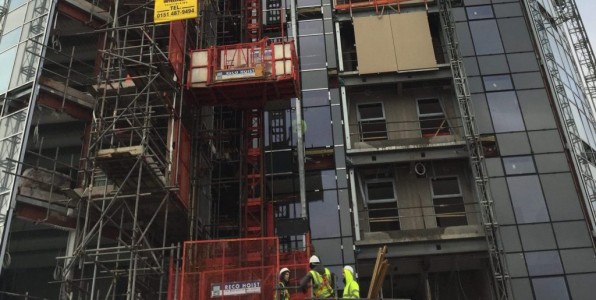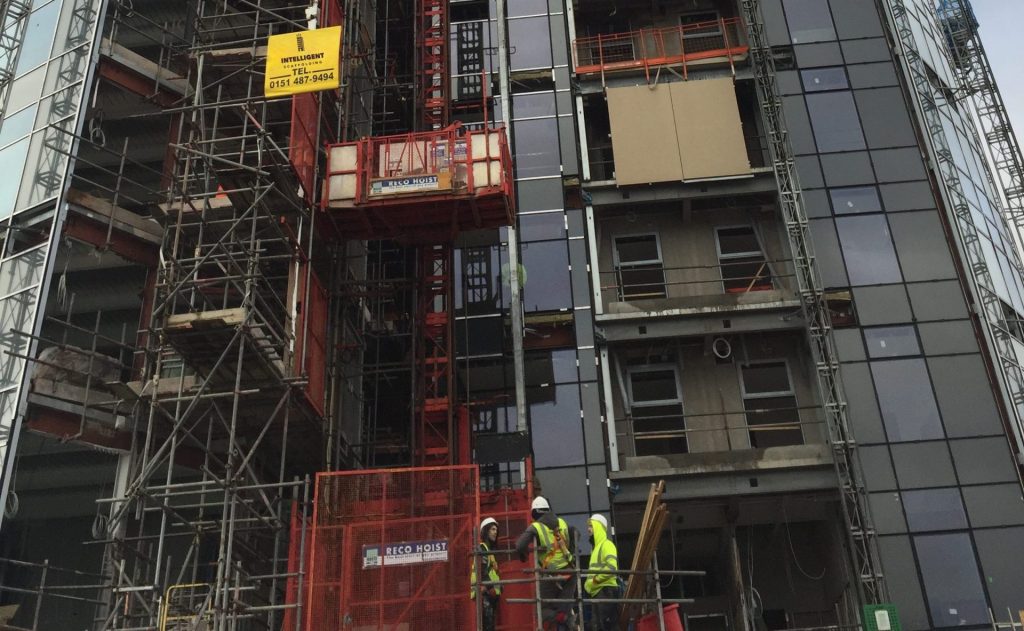How the Construction Industry Is Resuming Amid COVID-19

How the Construction Industry Is Resuming Amid COVID-19

It’s fair to say that 2020 has so far been a very turbulent year for everyone on the planet. With the ongoing COVID-19 pandemic, our way of living has changed dramatically, and lockdown restrictions have halted the economy. However, it’s not all doom and gloom. The construction industry was one of the first sectors to be given the go ahead by the UK government to resume, and the country itself is beginning to return to a sense of near normality. That said, we can’t ignore that the coronavirus is still out there. We must continue to adapt in how we function to help prevent the spread of the disease and to avoid further lockdowns.
Intelligent Scaffolding is a specialist scaffolding firm with decades of experience delivering a range of scaffolding services in Manchester and Liverpool. As one of the largest contractors in the North West region, they have worked on a huge portfolio of small-to-large scale construction projects. In this article, Intelligent will walk us through how the construction industry is restarting following the lockdown, including the new safety measures and procedures that businesses should put in place.
How Projects Are Getting Back on Track Safely
As the saying goes, the show must go on! With thousands of projects to be completed, from new builds to redevelopments and maintenance projects, the construction industry is vitally important to the successful running of the UK. This is an industry that is critical to both the economy and public safety, so it was welcoming news in May when construction projects were told that they could resume. Like every workplace in the current climate, however, projects can only resume in a COVID-Secure way. Employers must make sure that their staff and the general public are protected from the infectious disease, as well as other health and safety hazards. This remains an ever-changing situation that is governed by the Health and Safety at Work Act and the latest public health guidelines.
Before allowing employees to return back to work, the first step businesses should take to ensure their environment is COVID-Secure is to complete a Risk Assessment. This assessment should consider any risks that exist in the workplace and outline how you will aim to reasonably minimise the risk. The official government advice is that while you can’t completely eliminate the risk of COVID-19, you should take all necessary steps to reduce the risk to your employees and visitors. It’s recommended that you involve your staff in these discussions to hear any concerns they may have and to show that you value their safety as a priority. If you fail to complete a risk assessment, or do not take reasonable steps to mitigate the risk of transmission, then this is the first step to potentially breaking healthy and safety laws. Punishment can involve fines and imprisonment of up to two years.
In terms of who can work in a workplace environment, the current advice is that if you’re unable to work from home, then you should return to work as long as it is COVID-Secure. People who are able to work from home can return to their place of work as long as the employer has discussed this with them and carefully considered the impact it would have. For example, several factors should be considered such as the employer’s risk status, the commute, and individual circumstances. You should continually look for ways to mitigate risk and to keep your staff and the public safe from the disease. Be prepared for situations where employers may be required to self-isolate and take extra precautions when safeguarding vulnerable members of your team.
Within the workplace itself, it’s important to remember than social distancing is still a critical element of combating the virus. It remains a requirement that members of different households should keep a 2m distance away from each other. Where not possible, a 1m distance is allowed as long as mitigation measures are in place. Mitigation factors include face coverings, increased hand washing and surface cleaning, avoiding working face-to-face, and assigning staff to teams of support bubbles. Other important steps you may want to consider include introducing one-way lanes, minimising unnecessary site visits and reducing loud music that may result in workers shouting to be heard.
This article barely scratches the surface of how construction businesses can keep their employers safe. The government has issued in-depth advice on the different types of measures that you can take to achieve COVID-Secure status. If we all follow the rules, then we can ensure that the industry remains functioning and that another lockdown is prevented.
Comments are closed